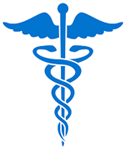
The Mental Health Nursing NCLEX Questions is helpful for the applicants in their preparation. Referring to the old exam paper/model paper helps the candidates in knowing how the question paper is going to be. However, here is an overview of question pattern. Download the Previous Year Question Paper Pdf given in the section below. This gives a clear idea of subjects you are preparing.
NCLEX Question Answer
1. Which is a description of the etiology of autism from a genetic perspective?(a) Parents who have one child diagnosed with autism are at higher risk for having other children with the disorder
(b) Amygdala abnormality in the anterior portion of the temporal lobe is associated with the diagnosis of autism
(c) Decreased levels of serotonin have been found in individuals diagnosed with autism
(d) Congenital rubella is implicated in the predisposition to autistic disorders
2. Which is a predisposing factor in the diagnosis of autism?
(a) Having a sibling diagnosed with mental retardation
(b) Congenital rubella
(c) Dysfunctional family systems
(d) Inadequate ego development
3. Which factors does Mahler attribute to the etiology of attention-deficit/hyperactivity disorder?
(a) Genetic factors
(b) Psychodynamic factors
(c) Neurochemical factors
(d) Family dynamic factors
4. The nurse on an in-patient pediatric psychiatric unit is admitting a client diagnosed with an autistic disorder. Which would the nurse expect to assess?
(a) A strong connection with siblings
(b) An active imagination
(c) Abnormalities in physical appearance
(d) Absence of language
5. The nursing instructor is preparing to teach nursing students about oppositional defiant disorder (ODD). Which fact should be included in the lesson plan?
(a) Prevalence of ODD is higher in girls than in boys
(b) The diagnosis of ODD occurs before the age of 3
(c) The diagnosis of ODD occurs no later than early adolescence
(d) The diagnosis of ODD is not a developmental antecedent to conduct disorder
6. A child diagnosed with severe mental retardation becomes aggressive with staff members when faced with the inability to complete simple tasks. Which nursing diagnosis would reflect this client’s problem?
(a) Ineffective coping R/T inability to deal with frustration
(b) Anxiety R/T feelings of powerlessness and threat to self-esteem
(c) Social isolation R/T unconventional social behavior
(d) Risk for injury R/T altered physical mobility
7. What is the group of drug commonly used for management of behavioral symptoms in ADHD children?
(a) Psychostimulants
(b) Benzodiaziphines
(c) Alpha tryphotphan
(d) Antidepressants
8. A client with bulimia nervosa has a history of severe GI problems caused by excessive purging. The nurse is aware that the client is at risk for which of the following?
(a) Renal calculi
(b) Esophageal tears
(c) Focal Seizures
(d) Muscle atropy
9. What is the gender identity disorders that results in the person believing he or she is the opposite sex?
(a) Exhibitionism
(b) Homosexuality
(c) Transsexualism
(d) Transvertitism
10. Among the following, which one manifestation is not associated with ADHD?
(a) Poor attention span
(b) Fidgety
(c) Impulsivity
(d) Dyslexia
11. Tourette’s disorder is typically characterised by all EXCEPT
(a) Multiple motor tics
(b) Multiple vocal tics
(c) Duration of less than 1 year
(d) Onset usually before 11 years of age
12. Stanley, a 72-year-old widower, was brought to the hospital by his son, who reports that Stanley has become increasingly withdrawn. His wife died 5 years ago and the son reports, “He did very well. He didn’t even cry.” Which would be the priority nursing diagnosis for Stanley?
(a) Complicated grieving
(b) Imbalanced nutrition: less than body requirements
(c) Social isolation
(d) Risk for injury
13. Among the following, which one is NOT a type of Psychosocial theory of aging?
(a) Personality theory
(b) Disengagement theory
(c) Developmental tasks theory
(d) Wear and tear theory
14. The most commonest psychiatric disorder among elderly is ______
(a) Depression
(b) Dementia
(c) Delirium
(d) Schizophrenia
15. The priority nursing intervention for a rape victim should be_____
(a) Help her to bathe and clean herself up
(b) Provide physical and emotional support during evidence collection
(c) Provide her with a written list of community resources for rape victims
(d) Discuss the importance of a follow-up visit to evaluate for sexually transmitted diseases
16. The nurses noticed on casual examination of co-worker Ms.Jana while she was vomiting. The coworker had bruises on her arms and torso. Some are bluish in color; others are various shades of green and yellow. She also noticed some small scars Ms.Jana abdomen protrudes on her small, thin frame. From the objective physical assessment, the nurse suspects that:
(a) Jana is experiencing physical and sexual abuse
(b) Jana is experiencing physical abuse and neglect
(c) Jana is experiencing emotional neglect
(d) Jana is experiencing sexual and emotional abuse
17. Which of the following represents a nursing intervention at the tertiary level of prevention?
(a) Serving as case manager for a mentally ill homeless client
(b) Leading a support group for newly retired men
(c) Teaching prepared childbirth classes
(d) Caring for a depressed widow in the hospital
18. The aspects of Indian disability Evaluation and Assessment Scale (IDEAS) all, EXCEPT
(a) Self care
(b) Duration of illness
(c) Interpersonal skill
(d) Intelligence
19. While assessing the disability using Indian disability Evaluation and Assessment Scale (IDEAS). The moderate disability(40%) is considered if the score is _____
(a) 7-13
(b) 14-19
(c) 20-29
(d) 30-39
20. Among the following, which facility can provide the homeless child to have family like environment?
(a) Respite home
(b) Foster home
(c) Halfway home
(d) Custodial home

No comments:
Post a Comment